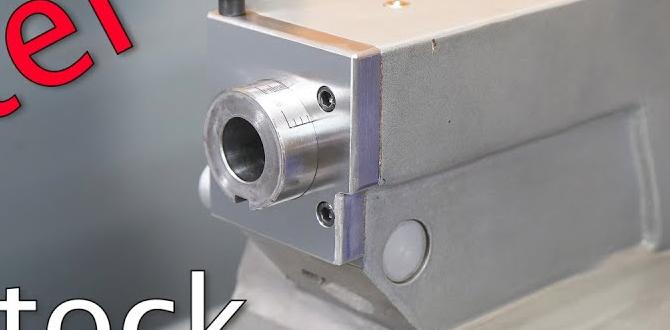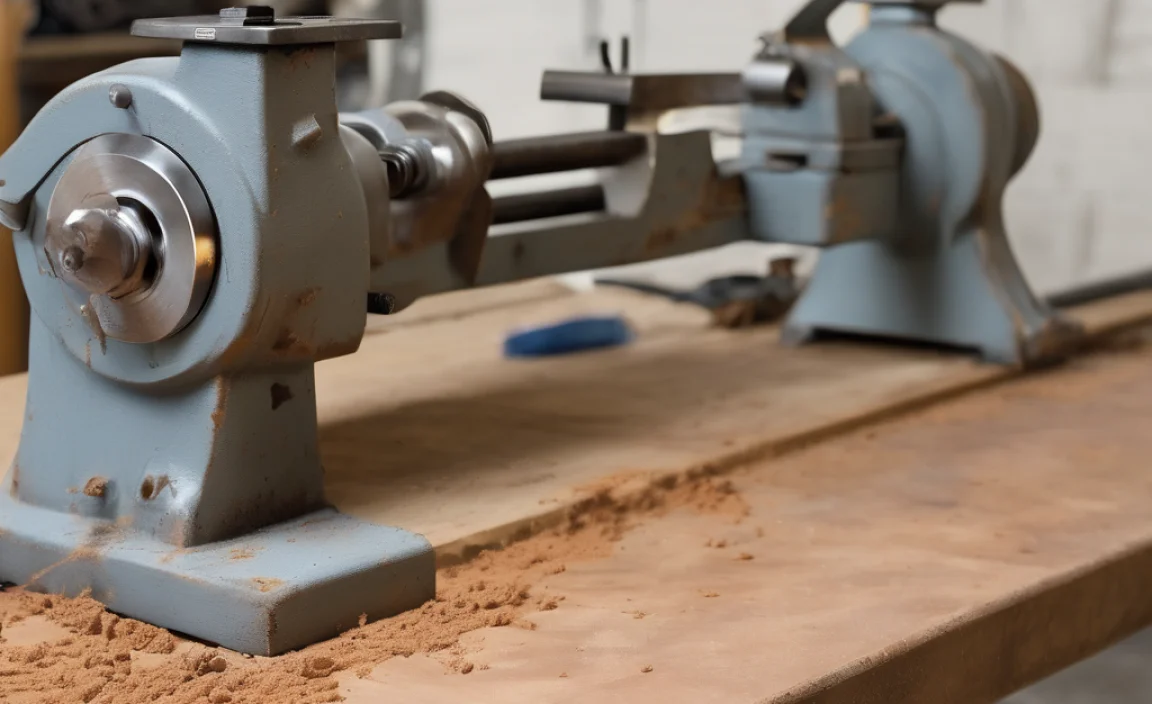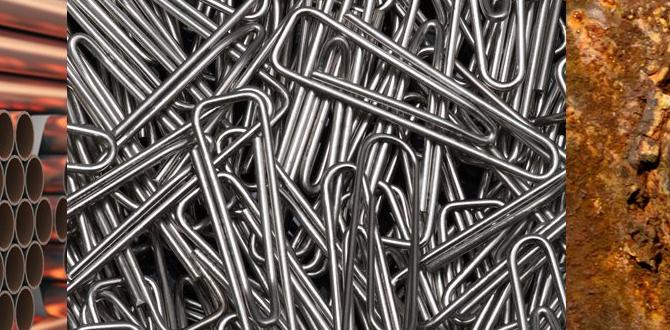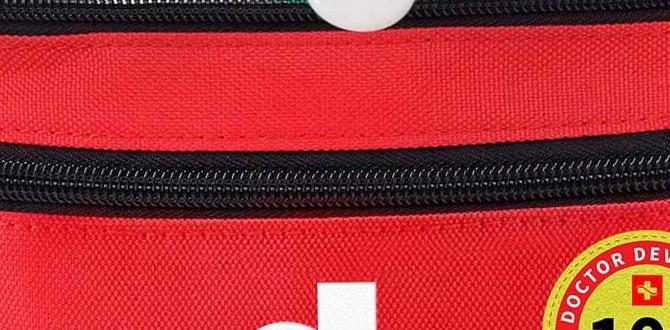To get a mirror finish on plywood with a carbide end mill, use a high-quality, single or two-flute bit designed for plastics or non-ferrous metals. Run it at a moderate spindle speed, a slow feed rate, and make shallow depth-of-cut passes. Climb milling yields the best results.
Getting a perfectly smooth, almost reflective finish on plywood can feel like chasing a ghost, especially when dealing with standard tools. Often, you end up with fuzzy edges and a surface that looks more sanded than machined. It’s a common frustration for anyone trying to achieve that super-clean, professional look in their projects. But what if I told you that with the right tool and a few simple techniques, you can achieve a jaw-dropping mirror finish, even on a material like plywood? It’s not magic; it’s understanding your tools and how they interact with the material. In this guide, I’ll walk you through exactly how to use a carbide end mill to transform your plywood surfaces. Ready to unlock that elusive mirror finish?
What is a Carbide End Mill and Why is it Great for Plywood?
An end mill is a type of milling cutter. Think of it as a rotating drill bit that can also cut sideways. Unlike a drill bit that mostly goes straight down, an end mill can move horizontally (across the surface) and plunge downwards. Carbide is a super-hard material, much harder than high-speed steel (HSS). This hardness means carbide tools can cut faster, last longer, and handle tougher materials without getting dull quickly. When it comes to plywood, carbide is fantastic because it can slice through the wood fibers cleanly, reducing tear-out and fuzziness, which are the main enemies of a smooth finish.
For achieving a mirror finish on plywood, we’re specifically looking at certain types of carbide end mills.
Choosing the Right Carbide End Mill for Plywood
Not all carbide end mills are created equal, and for that perfect mirror finish on plywood, the specifics matter. We want an end mill that’s designed to leave a smooth surface, not one made for aggressively hogging out material.
Key Features to Look For:
- Flute Count: For a mirror finish, opt for end mills with fewer flutes. Single-flute (1-flute) and two-flute (2-flute) end mills are generally best. More flutes mean more cutting edges, which can sometimes lead to chip packing and a rougher finish on softer materials like plywood. Fewer flutes allow for better chip evacuation and cleaner cutting.
- Material: Solid carbide is the way to go. Its hardness provides a sharp edge that stays sharp longer, which is crucial for precise cuts.
- Coating: While not strictly necessary for plywood, some coatings can further enhance performance and tool life. For this application, an uncoated or AlTiN (Aluminum Titanium Nitride) coated end mill is usually sufficient.
- Geometry: Look for end mills designed for plastics, aluminum, or non-ferrous metals. These often have a sharper cutting angle (rake angle) and a polished flute design that helps prevent material from sticking and promotes a smoother cut.
- Diameter and Length: For most hobbyist CNC machines and typical plywood project needs, 1/8 inch or 1/4 inch shank diameters are common. A “standard length” refers to the typical flute length for a given diameter; avoid extra-long end mills for this task as they can be less rigid and increase vibration.
A good starting point for your plywood mirror finish project is a carbide end mill 1/8 inch 1/4 shank standard length designed for smooth finishes on plastics or aluminum. These bits have the sharpness and geometry needed to slice cleanly through the wood.
Understanding Your CNC Machine Settings
Your CNC machine’s settings are just as important as the end mill itself. Getting these right will ensure the end mill performs optimally and leaves that desired smooth surface.
Spindle Speed (RPM)
This is how fast the end mill spins. For a mirror finish on plywood, you generally want a moderate to high spindle speed. This allows the cutting edges to slice through the material efficiently, rather than rubbing and burning. A good starting range is typically 18,000 to 24,000 RPM. However, always consult your end mill manufacturer’s recommendations if available.
Feed Rate (IPM or mm/min)
This is how fast the CNC machine moves the end mill through the material. For a mirror finish, you need a relatively slow feed rate. This allows each cutting edge to take a clean bite and prevents the material from being ripped out. Starting around 30-60 inches per minute (IPM) is a good place to begin. You want to hear a consistent, light “shaving” sound, not a loud ripping noise.
Depth of Cut (DOC)
This is how much material the end mill removes in a single pass. For the smoothest finish, you want very shallow depths of cut. This is crucial. Instead of trying to cut the full depth in one go, take many shallow passes. A depth of cut of 0.010 to 0.020 inches per pass is often ideal for achieving a mirror-like surface. This approach minimizes the stress on the wood fibers and the cutting edges, leading to a much cleaner result.
Stepover
This is the distance the end mill moves sideways between parallel cutting passes. A smaller stepover means more overlap between the cut paths, which helps to blend the surfaces together for a smoother overall finish. For surfacing or achieving a final smooth layer, a stepover of 10-20% of the end mill’s diameter is a good starting point.
Climb Milling vs. Conventional Milling for Plywood
How the end mill spins in relation to the direction it moves makes a big difference. For plywood and achieving a mirror finish, one method stands out.
- Conventional Milling: The cutter rotates against the feed direction. This can cause more tear-out and a rougher finish, especially in plywood.
- Climb Milling: The cutter rotates in the same direction as the feed. This method pulls the material into the cutter, resulting in a cleaner cut, less tear-out, and a smoother surface finish. It’s generally the preferred method for achieving a mirror finish on materials like plywood.
Most modern CNC machines, especially those with ball screws that have minimal backlash, are set up for climb milling by default for passes that move across the material in a straight line. Make sure your CAM software is set to perform climb milling for your finish passes.
Step-by-Step Guide to Achieving a Plywood Mirror Finish
Let’s put it all together. This guide assumes you have a piece of plywood securely fixtured on your CNC machine and your design ready in your CAM software.
Step 1: Prepare Your Plywood and Machine
Ensure your plywood is flat and securely held down to prevent any movement during machining. A vacuum table or sturdy clamps are good options. Clean the surface of any dust or debris. Make sure your CNC machine is calibrated and in good working order.
Step 3: Define Your Tool in CAM Software
Create a new tool in your CAM software. Select a 1/8” or 1/4” single or two-flute carbide end mill designed for plastics or non-ferrous metals. Accurate tool definition is key to generating correct toolpaths. You can find excellent resources on tool selection and setup on websites like Manufacturing & Metalworking (MMS) for general machining best practices, which often translate to woodworking materials.
Step 4: Set Up Your Machining Operations (CAM)**
You’ll likely need at least two operations (or “toolpaths”) in your CAM software:
A. Roughing Pass: This pass removes most of the material quickly. Use a standard end mill for this if you have one, or use your finishing end mill with a much larger depth of cut and stepover to remove the bulk of the material. This is not about finish; it’s about efficiency.
B. Finishing Pass: This is where the magic happens. Select your chosen carbide end mill. Set the following parameters:
- Spindle Speed: 18,000 – 24,000 RPM
- Feed Rate: 30 – 60 IPM
- Depth of Cut: 0.010 – 0.020 inches (very shallow!)
- Stepover: 10-20% of the end mill diameter (e.g., 0.010” – 0.020” for a 1/8” bit)
- Milling Strategy: Climb Milling
- Area/Surface Finishing: Use a parallel or raster finishing strategy. Ensure you check the “rest machining” option if you did a roughing pass, so the finish pass only clears out the areas left by the roughing pass.
It’s highly recommended to run a “waterline” or “contour” style toolpath for the very final pass if your software supports it and you are profiling a 3D shape. For flat surfaces, a simple parallel pass rotated 90 degrees from previous passes can also help blend the surface.
Step 5: Preview and Simulate
Before sending the job to your machine, use your CAM software’s simulation feature. Watch the toolpath carefully. Does it look like it’s taking shallow passes? Is it using climb milling? This step can save you from costly mistakes.
Step 6: Run the Job
Load your carbide end mill into the CNC spindle. Carefully set your work zero (X, Y, Z origin). Start the job. Listen to the machine. It should sound like a smooth, clean cut, not a harsh tearing sound. If it sounds bad, stop the machine immediately and check your settings.
Step 7: Inspect the Finish
Once the job is complete, carefully inspect the surface. You should see a very smooth, almost reflective finish. There should be minimal to no visible lines from the cuts. If you are not satisfied, and there is still material to remove, you can run another shallow finishing pass, perhaps with an even smaller depth of cut (e.g., 0.005 inches).
Step 8: Final Touches (Optional)
For an even higher sheen, you can sometimes lightly sand with very fine grit sandpaper (600 grit or higher) or use a specialized polishing compound designed for wood or plastics. However, with the right technique, the CNC should do most of the heavy lifting for that mirror finish.
Maintaining Your Carbide End Mill
A sharp end mill is your best friend for a good finish. Even though carbide is hard, it’s also brittle and can chip if used improperly.
- Keep Flutes Clean: Always clear out any accumulated dust or debris from the flutes after a job.
- Avoid Excessive Heat: Overheating can dull the cutting edge. Ensure proper chip evacuation and don’t push the tool too hard.
- Inspect for Damage: Regularly check the end mill for any chips, micro-fractures, or dulling on the cutting edges.
- Replace When Dull: A dull end mill will require more force, produce more heat, and create a rougher finish. Don’t be afraid to replace it when its performance drops.
For a truly professional finish, maintaining your tools is as important as using them correctly. A damaged or dull end mill simply cannot produce a “genius” finish.
Troubleshooting Common Issues
Even with the best tools and settings, you might run into problems. Here’s how to fix them:
| Problem | Potential Cause | Solution |
|---|---|---|
| Fuzzy Edges or Tear-out | Conventional milling; Feed rate too high; Depth of cut too deep; Dull end mill. | Ensure climb milling; Reduce feed rate; Reduce depth of cut for finishing passes; Use a sharp, new end mill. |
| Scalloping or Visible Lines | Stepover too large; Machine rigidity issues (chatter); Z-axis runout. | Reduce stepover in finishing pass; Ensure workpiece and machine are rigid; Check Z-axis for runout and ensure it’s properly trammed. |
| Burning or Melting | Feed rate too slow; Spindle speed too high; Insufficient chip evacuation. | Increase feed rate; Decrease spindle speed; Ensure flutes are clear, consider dust collection. |
| Material Sticking to End Mill | Feed rate too slow; Incorrect end mill geometry for material; Surface speed too high without adequate cooling. | Increase feed rate; Use an end mill designed for plastics or aluminum; Reduce spindle speed or improve dust collection. |
Why Use a Carbide End Mill for Plywood Over Other Tools?
You might be wondering why a carbide end mill is the star of this show, rather than, say, a router bit or a specialized plywood cutter.
- Precision: CNC machines controlled by software allow for extremely precise movements, far beyond what is possible with a handheld router. This precision is essential for achieving a uniform mirror finish across a surface.
- Consistency: An end mill on a CNC will make identical passes every time. This consistency is critical for a flawless finish.
- Sharpness and Hardness: As mentioned, carbide is very hard and can hold a sharp edge longer than most steel bits. This sharp edge is what makes the clean, shearing cut necessary for a smooth surface.
- Designed for Slotting and Contouring: End mills are designed to cut in multiple directions, making them versatile for shaping and surfacing, which is exactly what you need.
While other tools can cut plywood, for the specific goal of a manufactured, flawless mirror finish achievable by automated precision, a carbide end mill on a CNC is the optimal choice. For more information on CNC machining basics, the National Institute of Standards and Technology (NIST) provides excellent background on Computer Numerical Control (CNC) technologies.
FAQ: Your Plywood Mirror Finish Questions Answered
Q1: Can I really get a “mirror” finish on plywood?
Yes, you absolutely can! It won’t be like a mirror made of glass, but it will be incredibly smooth and reflective, with minimal to no visible cut lines. It looks and feels like a highly polished surface achieved through machining, not just sanding.
Q2: What’s the difference between a single-flute and two-flute end mill for this job?
For plywood, both can work well. A single-flute end mill typically allows for faster feed rates while maintaining a clean cut because it has more open space for chip evacuation. A two-flute end mill can sometimes provide an even smoother finish due to more cutting edges engaging the material, but it requires careful attention to chip clearing.
Q3: My plywood has voids in the layers. Will this affect the mirror finish?
Voids can cause issues. If the end mill encounters an air pocket, it can lead to a slight indentation or a rough spot. Using very shallow depths of cut and ensuring your plywood quality is good can minimize this. For critical projects, you might need to fill voids or choose a higher-grade plywood.
Q4: Do I need a dust collection system?
Yes, a dust collection system is highly recommended. It keeps the cutting area clear, which helps the end mill cut cleanly, reduces heat buildup, and is crucial for your health and workshop environment.
Q5: How deep should my finishing pass be? I see numbers like 0.010″ and 0.020″.
These numbers represent the material removed in each pass. For a mirror finish, you want the end mill to take very light “shaving” passes. Think of it like a very precise scraper. 0.010 to 0.020 inches (about 0.25 to 0.5 mm) is a good, shallow depth that allows the end mill to slice cleanly without tearing. Deeper cuts will not yield the same smooth results.
Q6: My CAM software only allows me to set a “stepdown” for 3D surfacing. What should I use?
In this context, “stepdown” is synonymous with “depth of cut.” For your finishing operation, ensure this stepdown value is set to the very shallow numbers discussed (0.010″ – 0.020″). For true 2.5D operations like pocketing or profiling, you would set a very shallow “depth of cut” for the finishing pass.
A Final Thought on Crisp Edges
Achieving a mirror finish isn’t just about the surface; it’s also about the edges. A perfectly machined edge on plywood looks crisp and clean, and this is where your end mill choice and settings really pay






